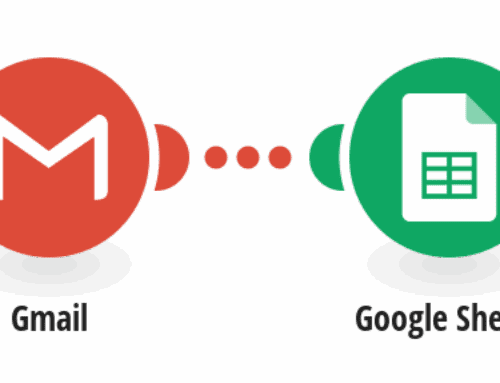How to Backup New Google Photos to FileCloud
Introduction to the Importance of Backing Up Photos
In today’s digital age, safeguarding your precious memories in the form of photos is more crucial than ever. While Google Photos provides a convenient platform for storing these images, relying solely on it could be risky. Just think about it: what if your account gets compromised or you lose access? Ensuring there’s a secondary backup can give you peace of mind.
Enter FileCloud, a versatile cloud storage solution that not only complements Google Photos but also serves as an additional safety net for your photographic treasures. We all love taking countless photos and sharing them with friends and family. By backing them up, you’re ensuring they remain safe and sound, no matter what happens.
Understanding Google Photos and FileCloud
Google Photos is renowned for its user-friendly interface and generous storage options, allowing users to store thousands of photos without worrying about space limitations. However, it’s always wise to diversify where you store your images. FileCloud comes into play here as a reliable alternative for those who want to ensure their memories are doubly secured.
FileCloud, on the other hand, offers a robust platform for file management with emphasis on security and accessibility. It allows users to have greater control over their data, making it a perfect partner for Google Photos when it comes to creating a comprehensive backup system. Think of it as having two bank accounts; it’s just smart to spread your assets.
Why Choose FileCloud for Backing Up Your Photos?
FileCloud stands out due to its advanced features and ease of integration with a variety of platforms. Not only does it offer secure data storage, but it also boasts seamless synchronization capabilities. This means you don’t have to worry about manually transferring files. It’s like having a trusty sidekick that takes care of the nitty-gritty for you.
Moreover, FileCloud’s user-friendly interface ensures that even those not particularly tech-savvy can navigate it with ease. The ability to access your backups from any device adds an extra layer of convenience. Imagine being able to view your trip photos from any corner of the world—FileCloud makes this possible with just a few clicks.
Steps to Set Up Your Backup System
Setting up a backup system might sound daunting, but with simple steps, you can easily automate it. First, you’ll need to link your Google Photos with FileCloud. This connection is vital as it sets the foundation for automatic syncing of new photos between the two platforms.
Once linked, you can then customize the sync settings according to your preference. Whether you want daily, weekly, or instant backups, the choice is yours. Think of this as setting up a digital insurance plan; you dictate the terms based on what feels most secure for you.
Troubleshooting Common Issues
Every now and then, technology can throw a wrench in our well-laid plans. Common issues might include connectivity problems or sync errors. Don’t fret! Most of these can be fixed with simple troubleshooting steps like checking your internet connection or verifying permission settings.
If syncing doesn’t work as expected, ensuring both applications have the required access permissions often resolves the issue. Remember, even Batman had Alfred—technical hiccups just need a little nudge in the right direction to keep things running smoothly.
Ensuring Security in Your Backup Process
The security of your photos should be top priority. FileCloud employs state-of-the-art encryption to ensure your data remains inaccessible to unauthorized users. It’s like having your own digital vault, keeping those cherished moments locked away safely.
Additionally, enabling two-factor authentication adds another layer of protection. This step may seem minor, but it acts as a formidable barrier against potential breaches. It’s always better to say “better safe than sorry” rather than regret not taking that extra step.
The Role of Automation in Photo Backups
Automation is the unsung hero in the realm of backups. With FileCloud, once you establish your backup preferences, the system takes over, executing backups without any manual intervention. It’s akin to having a personal assistant who works tirelessly behind the scenes.
This automation not only saves time but also ensures consistency in backups. You’ll never miss a backup day, and you won’t even have to lift a finger. Imagine always waking up to freshly brewed coffee—effortless and consistent, that’s what automation brings to your photo backups.
Conclusion: Keeping Your Memories Safe
In conclusion, backing up your Google Photos to FileCloud is an effective strategy for preserving your memories. It combines the strengths of both platforms, offering robust security and accessibility. Remember, while our lives are full of fleeting moments, photos have the power to immortalize them. Ensuring they’re safe and backed up is akin to securing a piece of your life story.
FAQs
1. How do I link Google Photos to FileCloud?
To link Google Photos with FileCloud, you need to access the integration settings within FileCloud. Follow the step-by-step instructions provided there to establish a connection between the two platforms.
2. Can I customize which photos to backup?
Yes, FileCloud allows you to customize backup settings, letting you select specific albums or timeframes for backup. This way, you’re in control of what gets stored.
3. What if I experience sync issues?
If you encounter sync issues, check your internet connection and verify that both Google Photos and FileCloud have the necessary permissions. Often, re-establishing the connection resolves the problem.
4. Is there a limit to how many photos I can backup?
With FileCloud, the storage limit depends on your subscription plan. Ensure your plan accommodates the volume of photos you intend to back up.
5. How secure is FileCloud’s backup process?
FileCloud implements high-level encryption and security measures to protect your data. Enabling two-factor authentication further enhances security, keeping your photos safe from unauthorized access.









